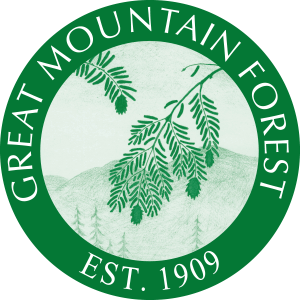
PREVIOUS WEATHER REPORTS
February 2008
Second Wettest February in last 77 years
By Russell Russ
The month’s high temperature of 54 degrees was observed on February 18. The low temperature of 1 degree below zero was observed on February 29. The average temperature this month was 24.8 degrees. This was 3.5 degrees above the normal February average, but by no means record setting.
February’s normal monthly total precipitation amount is 3.74 inches. The total precipitation recorded this February was 9.85 inches, a whopping 6.11 inches above normal. Now this was record setting. It was the second highest February precipitation amount in the last 77 years. Only 1981 with 11.70 inches recorded more February precipitation. Two thunderstorms were observed at the station this month, a small one during the morning of February 5 and a larger one that produced a burst of hail during the evening of February 6. The month’s two biggest rainmakers dumped large amounts of rain over short periods of time. During a roughly 20 hour long period from 6 a.m. February 6 to 2 a.m. February 7 we recorded 2.13 inches of precipitation. And, during a roughly 22 hour long period from 6 p.m. February 12 to 4 p.m. February 13 we recorded 3.38 inches of precipitation.
February’s snowfall total was 25.9 inches, which was 4.3 inches above normal. The largest snowstorm this month was on February 22 when we received 8.2 inches of snow. Many open areas around town lost their snow cover for periods of time, but at the weather station we have now had a constant snow cover since the beginning of December. The snow cover at the station this month ranged from a low of 5 inches to a maximum of 17 inches.
An often-asked question, why are these weather summaries always two months old? The reason for the two month lag is that Norfolk Now must have their articles in by the second or third week of the month and at that time you obviously cannot have a complete month’s worth of data. So, to read about a certain month you must wait until the end of the following month when the article is published.
January 2008
Sun dogs and Icebows
By Russell Russ
The month’s low temperature of 5 degrees below zero was observed on January 3. The high temperature of 57 degrees was observed on January 8. The average temperature this month was 25.0 degrees. This was 4.7 degrees above the normal January average. A wind chill temperature of 26 degrees below zero was recorded during the early morning of January 3.
The low temperature of 5 degrees below zero observed during the early morning of January 3 tied a record low for that date. It was also 5 degrees below zero back on January 3, 1981. Four days later on January 7 we tied a record high temperature for that date with 52 degrees, the same high temperature that was recorded back in 1946. The 57 degrees observed on January 8 set a record high for that date, beating the old record high of 52 degrees set back in 1937.
The total precipitation recorded for the month was 2.37 inches. This was 1.64 inches below normal. Interestingly, December’s total precipitation was exactly 1.64 inches above normal. There were a few flashes of lightning and rumbles of thunder on the morning of January 11. January’s snowfall total was 19.2 inches which was 2.5 inches below normal. The snowstorm that began during the late evening of January 13 and ended during the day on January 14 was by far the biggest, dumping a total of 9.8 inches at the station. As in December, there was a snow cover on the ground at the station every day this month. The snow cover ranged from a low of just 3 inches to a maximum of 13 inches with a daily average of 9 inches.
A beautiful icebow was observed on the morning of January 3. A unique phenomenon, which also occurred to a lesser extent on January 22, that generally occurs in colder climates. When the air temperature is very cold and there are high thin clouds the light from the low on the horizon sun refracts through the ice crystals in the clouds resulting in a band, or bow, of color. A parhelion, or sun dog, is formed under somewhat similar circumstances, but only appears as a colored luminous spot to either side of the sun. When conditions are right a parhelion can form on both sides of the sun. At the weather station this month there were seven days when a parhelion was observed.
Previous Weather Summaries
Weather Data Sheets

GET IN TOUCH!
860 824-8188

